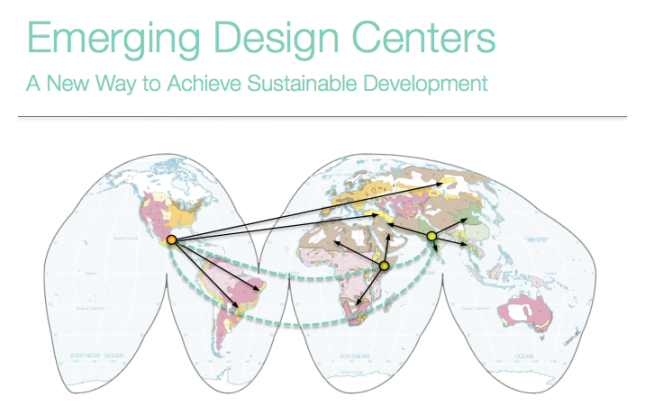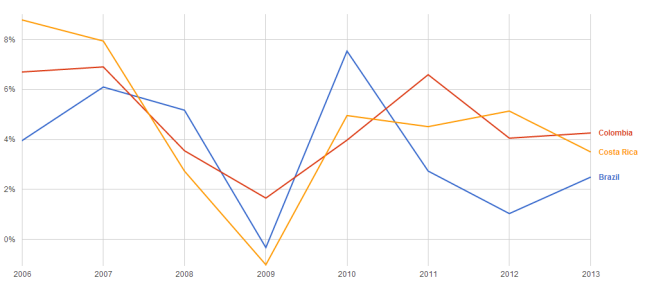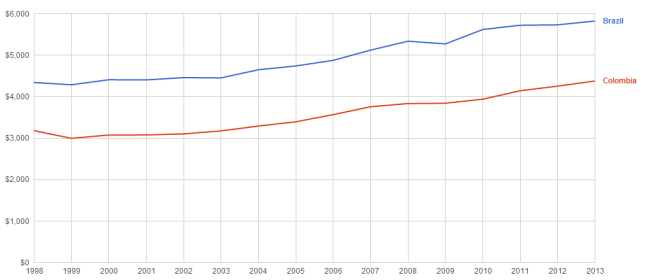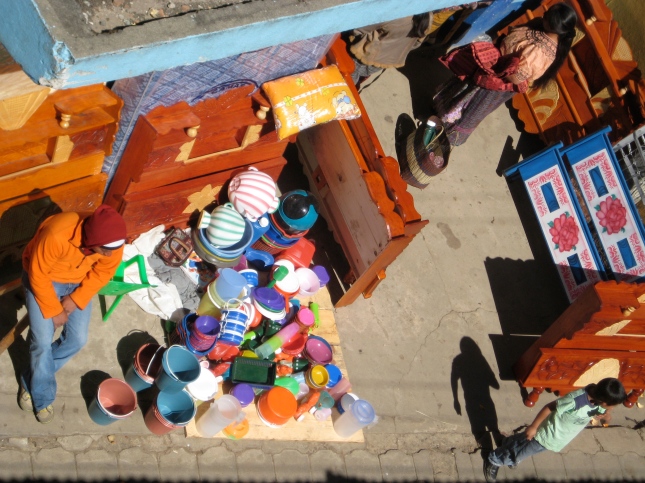For a while now, I’ve been mentally stockpiling a collection of strategies, thoughts, concepts, etc that I find compelling and successful, most are evidence-based, i.e. from my personal experience – most of them I’ve hit on somewhere in this blog already (in fact, they are one reason for this blog), and many are interrelated.
For example, anthropology; I think that anthropology adds an invaluable lens to any attempt at communication. Also, entrepreneurship; to me, this is the most central example of community-originiated solutions to community issues. Collaboration; I think collaboration is the future of progress, in a nutshell. Human-centered design, like service design, interaction design, etc. Business as a powerful mechanism, that is dominating, and will continue to dominate, interactions.
Right now, how I understand these coalescing is something like this: The base of the pyramid is a great market opportunity. Products & services that currently exist will not properly serve these populations. The conditions are too different, and the prices are not right. So products & services have to be adapted, innovated and invented to service this market. (And, as Jonathon Feit has observed: “The key to designing a successful product ultimately resides in understanding customers’ problems and what they are willing to do or pay to solve them.“)
I wonder if private corporations can or will subsidize the R&D of products & services made by BoP populations, for BoP markets, as long as they are the distributor, or first client of said service or product. A collaboration with the government is likely too, if this falls under the realm of ‘development’. (I wonder if I can be part of team that brings together private corporations, local NGOs, and government at any level?). How do we avoid unnecessarily (and detrimentally) skewing markets? How do we support the development of products and services that are the most necessary to raising the quality of life and opportunity? Do we just support entrepreneurs? Offer product development training? How do we scale that? How do we fund that?
I’m just beginning to think about this, and one impetus for business school is to investigate this idea and understand, as Erik Simanis says below, how basic business tenants and models must be adapted to fit the conditions of ‘D & E consumers’, and how I can complement my work in anthropology and communications with business studies in order to comprehensively understand customers’ problems and what they are willing to do or pay to solve them (as Fiet noted, above)
One iteration of this is microfranchsing. To my knowledge, this is mostly achieved, at the moment, by large NGOs and governments hiring someone like Fairbourne Consulting to assess the entry points and strategy for supporting microfranchises of a certain type/industy in a certain community. But I think that these efforts will be funded more and more by large corporations who recognize the untapped consumer base and understand the risk.
I recently read this article about Emerging Design Centers, which essentially offers another iteration of how these concepts could come together. (I’m currently stalking the author, Daniel Altman, until we can have coffee and I can learn more about his driving forces, thoughts about where this could end up, and how I can help. If you know him, let me know! If you want to join forces, let me know!)

source: http://danielaltman.com/edc/EDC-flyer.pdf
Further Reading:
Microfranchising at the Base of the Pyramid, 2008 Working Paper by Acumen Fund
Microfranchising Toolkit for sale!
Erik Simanis, the managing director of Market Creation Strategies at the Center for Sustainable Enterprise at Cornell University’s Johnson School of Management, suggests the following, related to this quest:
A business-led movement that serves the needs of significant numbers of D and E consumers will materialize only when companies crack the profitability code and demonstrate an investment-worthy opportunity to shareholders… Getting to profitability will require a laser focus on basic business tenets, which include matching business models to the constraints of the commercial environment. And in D and E markets, the environment demands a very high contribution per transaction.
It’s an approach that has allowed the microfinance industry to flourish and transform the lives of millions of people across the developing world. So for those companies that truly believe in the value of their products and are committed to bringing integrity, professionalism, and world-class operational standards to D and E markets, I would say: It’s time to get over your unease about profits and get into the game. Selling to the poor can make a difference to your bottom line as well as to the lives of your new customers and the communities in which you operate.
[http://blogs.hbr.org/cs/2012/06/businesses_serving_the_poor_ne.html]


 GDP per capita (constant US$ 2000)
GDP per capita (constant US$ 2000)






